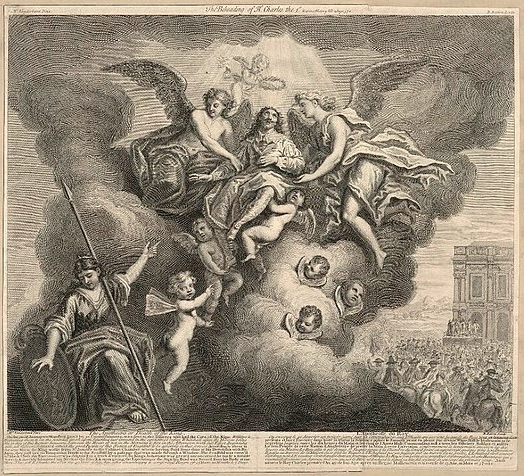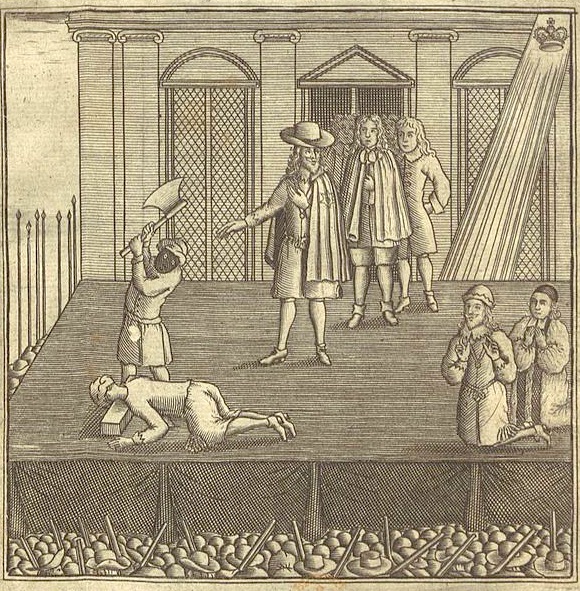
The long sleeve vest, believed to have been worn by King Charles I during his beheading, is now owned by The Museum of London. The article below is from 1899 and details the auctioning of the vest, as well as its assumed history.
A King’s Execution Garment
Vest Worn by Charles I When He Was Beheaded
The sum of 200 guineas bid the other day for the sky colored vest worn by King Charles I on the scaffold is not an exorbitant price for a relic at once authentic and ghostly. Nothing is lacking that might make a good Jacobite’s flesh creep. The stains of blood have been religiously preserved by a succession of royalist owners, and it has been pointed out that of the thirteen buttonholes only twelve had been fastened. The top button had been removed, so that the illustrious victim might more easily bare his neck to the executioner.
“He nothing common did or mean. Upon that memorable scene, But with his keener eye, The ax’s edge did try.”
Such was the testimony of a republican poet, and there is no doubt that the sad dignity with which “Charles Stuart” comported himself in his last days roused qualms of remorse among some of those contemporaries who had been harshest in their judgement of his public policy.

Admiration of the man went far to redeem the faults of the king, and with posterity he became at once the most sympathetic figure in the history of England – not even second to Mary Queen of Scots. And of her nobody will ever believe, let the Dryasdusts bring forward what documentary evidence they please, that she painted her face and wore false hair.
It is pretty certain, if the purchaser of King Charles’ silken raiment ever thinks of allowing that precious possession to pass out of his family, that it would fetch far more than he has given for it. Placed in any museum it would always be thronged with sightseers; the combination of royal associations with gruesome memories would be irresistible.

The most superior person is attracted, though he may deny it, by such horrors as a book bound in human skin, or by instruments, like the Maiden of Nuremberg, which he knows to have been used for torturing real men and women to their death.
This relish of bloodshed – as distinguished from mere love of adventurous deeds – has given vogue to whole schools of romancers; it helped to account for the sudden popularity of Mr. Rider Haggard’s tales, as it made the fame of Maurus Jokai.
The taste is, no doubt, morbid, and ought not to be encouraged. But it is natural and has to be taken into account. And the psychological interest of it is to show that we are not, in our feelings, so far removed from our barbaric ancestors as we like to think.
Source: The true Democrat. (Bayou Sara [La.]), 18 March 1899.

